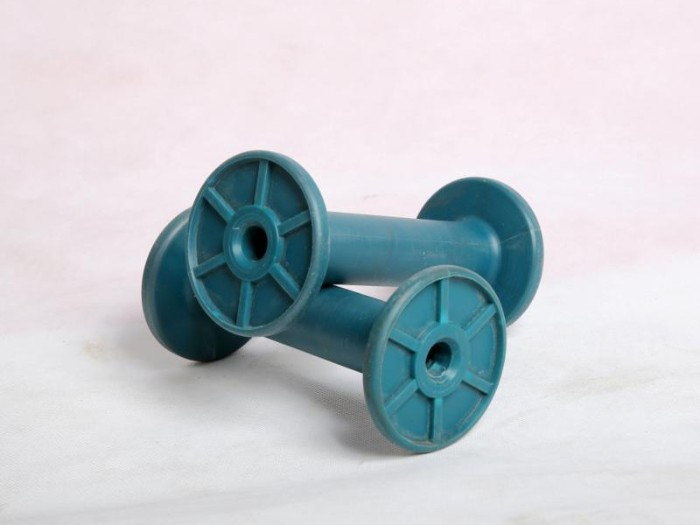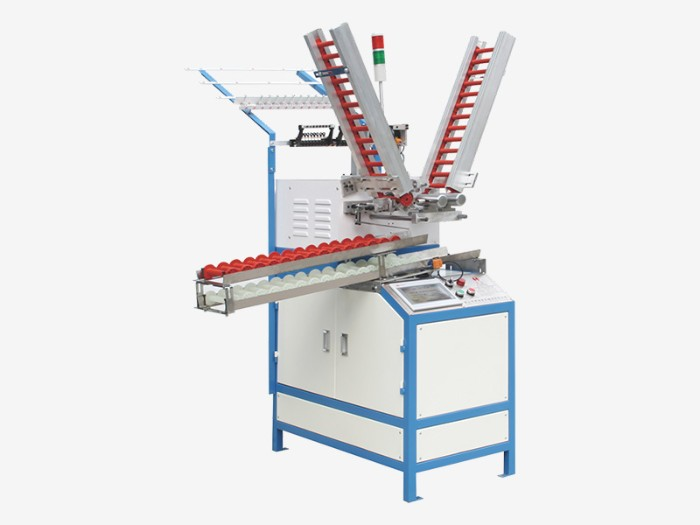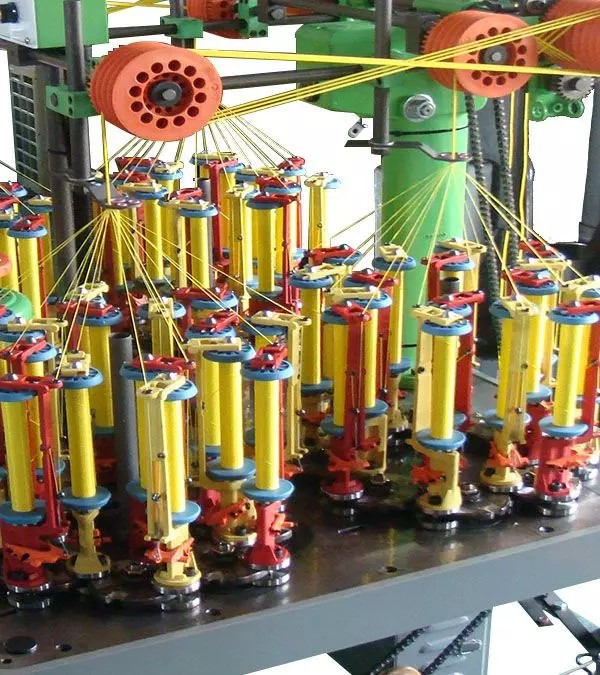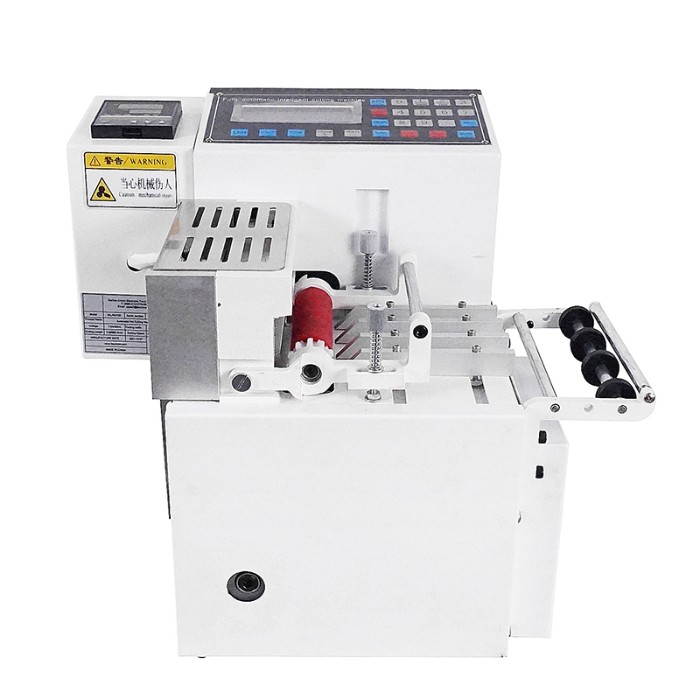Do you know how paracord is made? If not, you’re in for a treat! In this blog post, we will provide a step-by-step guide on the production process of paracord. Paracord has become increasingly popular in recent years, and for good reason! It is incredibly versatile and can be used for a variety of purposes. Whether you are a wholesale buyer or just curious about the manufacturing process, this blog post has something for everyone. Stay tuned for more information on paracord!
The paracord is made of inner strands and outer sheaths, which are machine-woven. Inner strands(core) are twisted from smaller yarns (usually 3 strands), while outer sheaths are braided (usually 32 strands). outer sheaths protect the inner strands. The inner strands are mainly weight-bearing.
Paracord is also called parachute cord, one kind of rope. It is divided into commercial paracord and mil-spec paracord. The material of Commercial paracord is polyester or nylon, and the tensile strength is less than 550lb. Mil-spec paracord is military specifications, 100% nylon, with a tensile strength greater than 550lb.
Paracord can be used in tents, survival bracelets, custom lanyards, belts, hunting, crafting, camping, truck tie-downs, shoelaces, backpacks, sewing, bags, and other light, medium, and heavy-duty applications.
Step 1: Order The Yarns Used By Outer Sheaths
The fibers are spun into yarn. To make yarns, the fibers are first to cut into very small pieces. The mixture is then heated and squeezed through a small hole, which turns it into a thread. The thread is then wound around the spindle to create a single strand of yarn. When selecting the right type of yarn for paracord, it’s important to consider its weight, length, and color.
Yarns are dyed in a variety of colors. There are various ways to dye the yarn. One way is to use a vat, which is a large container filled with water and dye. The yarn is dipped into the vat, and then removed and hung up to dry. This process can be repeated until the desired color is achieved. Another way to dye the yarn is by using a spray gun. The yarn is placed in a large container, and then the dye is sprayed on it. This process is much faster than using a vat, but it can be more difficult to achieve a consistent color.

Source: Pexels
Step 2: Order Inner Strands
The inner strands are made from a variety of synthetic and natural yarns, depending on the desired characteristics of the paracord. For example, if you want a lightweight, load-bearing paracord, then you would use synthetic fiber such as nylon or polyester. However, you can additionally add other functional yarns such as fishing lines, hemp, etc.
The yarns are usually white but can be ordered in other colors. To make the inner strands, you will need to twist three smaller yarns together. This can be done by a machine. Make sure to keep the tension even while twisting to create a consistent strand. Once you have twisted the three smaller yarns together, you will have created an inner strand that is ready for use in paracord production.

Step 3: Pre-production Preparation
The yarn for the outer sheath is wound onto the bobbin. A bobbin is a spindle or cylinder, with flanges, on which yarn is wound.

To wind the yarns onto the bobbins, first, make sure that the yarn is free of tangles and knots. Once it is untangled, use a bobbin winder to wrap the yarn around the spindle.

Be sure to keep an even tension on the yarn as you wind it on to avoid creating lumps or kinks in the fiber. You should also avoid wrapping the yarn too tightly, as this can damage the fiber.
The number of yarns and their size will depend on the type of paracord being made.
The inner strands do not need to wind onto bobbins because they will be twisted together with the outer sheath. The outer sheath protects the inner strands and helps them to stay together.
Step 4: Braiding Process
Bobbins are mounted onto a braiding machine, where the braiding takes place. The braiding process is what makes paracord so strong and durable. It involves intertwining several pieces of yarn together in a specific pattern. Depending on the style of the paracord being made, there can be anywhere from two to 32 strands that are used for this process. For instance, some types may have a diamond braid while others have a more complex spiral design. Besides, the more strands that are intertwined, the more strength and durability the paracord will have. So, if you need a thick, heavy-duty paracord, then you should use as many yarns as possible in the braiding process.

Step 5: Quality Checking
Once the paracord is braided, it is then inspected to ensure that it meets quality standards. The first step in quality control is to check for any inconsistencies or defects in the cord. If any are found, they are removed and corrected before the next step.
There are a few reasons why you may find inferior paracord products on the market. One reason is that not all paracords are created equal. There are a lot of low-quality paracords out there that are not made to the same specifications as the better-quality cords. So, if you’re looking for a high-quality product, it’s important to do your research and make sure you’re buying from a reputable source.
Another reason for the prevalence of low-quality paracord is that it can be difficult to distinguish good products from bad ones. With so many different brands and varieties available, it can be hard to know which ones are worth your money. This is where quality control comes in. Quality control inspectors check each cord for defects and inconsistencies and remove any that don’t meet standards. This helps to ensure that only the best-quality cords make it to the market.
Step 6: Heat-cutting
This is done by heating up the blade until it is very hot and then quickly slicing through the cord.
There are a few different machines that can be used for heat-cutting, including a hot knife, scissors, or a guillotine. The type of machine that is used will depend on the size and shape of the cord being cut.

This process helps to keep the cut of the rope from falling apart and provides a neat and even end. It also seals the ends, providing additional protection against fraying and tearing.
Step 7: Packaging
This helps to protect it during transport and storage. It can be packaged in a variety of ways, depending on the buyer’s needs. Some common methods of packaging include:
– Spools: This is the most popular way to package paracord. The cord is wound around a spool and then covered with a plastic or metal casing.
– Hanks: A hank of paracord is a length of cord that is not wrapped around a spool. It is simply coiled up and secured with a knot or crimp.
– Bundles: Paracord can also be packaged in bundles, which are groups of hanks tied together.
To wind the paracord into bundles or hanks, first, cut it to the desired length. Then, using a crimping tool, crimp one end of the cord to keep it in place. You can also use a knot to secure it.
Next, use a bobbin winder to wrap the cord around the spindle. Be sure to keep an even tension on the yarn as you wind it on to avoid creating lumps or kinks in the yarn. You should also avoid wrapping the yarn too tightly, as this can damage the yarn.
After the paracord is wound into bundles or hanks, it is ready for sale.
Conclusion
And that’s it! From start to finish, the paracord production process is a complex and detailed process that takes skill and experience to master. With the right tools and techniques, however, this process can be used to create high-quality paracord for any purpose. If you’re looking for quality paracord products, why not look into finding a reputable paracord manufacturer or factory? You can find wholesale prices if you purchase large quantities, making it easier than ever to get the paracord supplies you need. You can refer to this article: Where to Find a Paracord Manufacturer?

